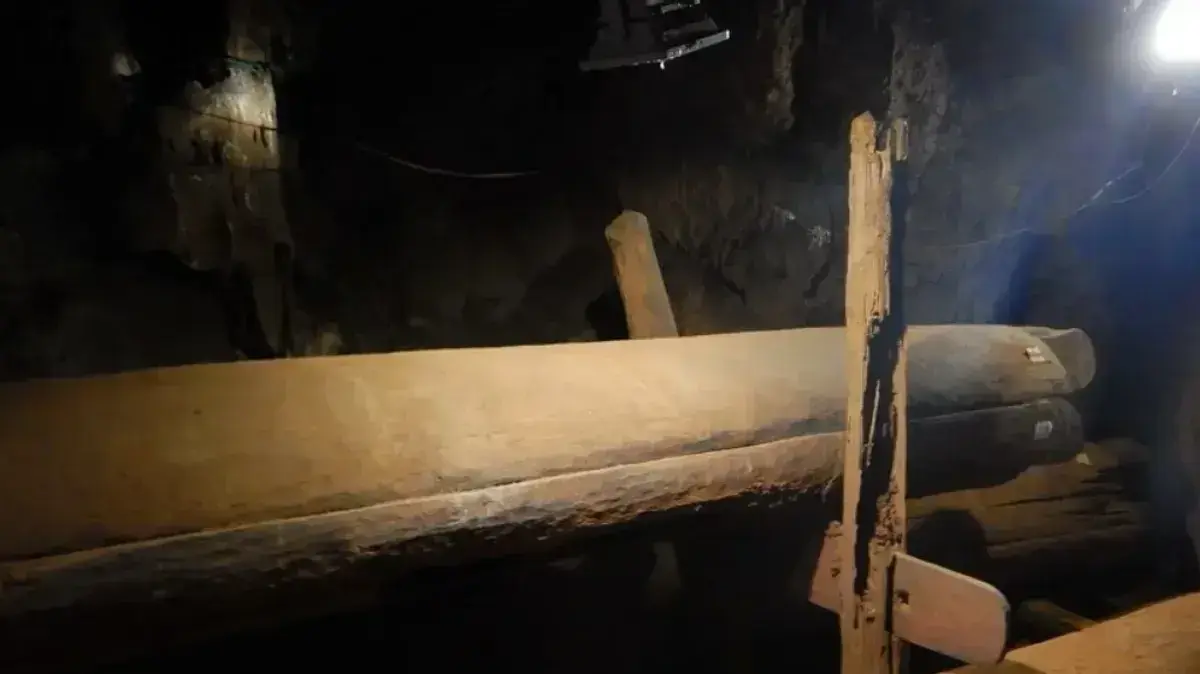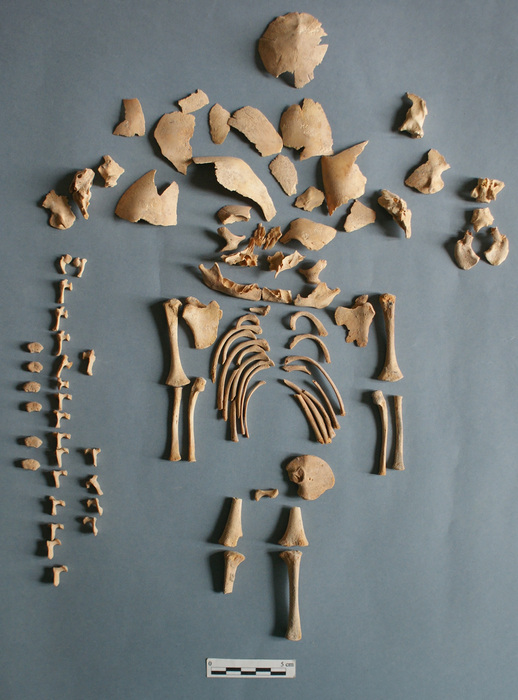- Click to share on Facebook (Opens in a new window)
- Click to share on Twitter (Opens in a new window)
- Click here to share on LinkedIn (Opens in a new window)
- Click to email a friend (Opens in a new window)
(CNN Spanish) - Two babies from former burial mounds in South America were found wearing helmets made with the skulls of other children, according to new research.
It is the first known evidence of ancient people who use children's skulls as funeral headdresses anywhere in the world, say researchers in their study published earlier this month in the Latin American Antiquity scientific journal.
From 2014 to 2016, excavations on the coast of Ecuador discovered the remains of 11 individuals in ancient burial mounds, including two adults, a young man and four babies. Small artifacts and shells were found around the burials.
But it was two of the babies found in two burial mounds that were found with skull "helmets"; the bodies date from approximately 100 BC.
- READ: Find remains of 250 children slaughtered in Peru
The research, led by assistant professor Sara Juengst of the University of North Carolina at Charlotte, found that a baby was 18 months old at the time of death and carried parts of the skull of another child between four and 12 years old.
The skull was put in a "helmet shape around the head of the first, so that the face of the primary individual looked through," the researchers said. A small shell and the bone of a child's finger were found between the "helmet" of the skull and the baby's head.
The other baby was between six and nine months old and carried skull fragments of a child between two and 12 years old.
The researchers said that the "helmets" of the skull probably still had meat when placed on the heads of babies, since children's skulls are often not held together.
Some items found during excavations of ancient burials on the coast of Ecuador.
The story behind the 'helmets' of the skull
In the study, the researchers acknowledged that there were several questions left to solve. They did not know what the skulls had been turned into "helmets," or why two babies wore "helmets" while others did not.
But researchers noted that separate heads were "symbolically important" in South America, and dead children often received special treatment in death.
- MIRA: Victims of human sacrifice found in England
"The human head was a powerful symbol for many South American cultures," the study found.
The researchers speculated that the "helmets" of the skull could have been an attempt to protect the souls of babies, a theory to which, they said, the figurines found around the burial site gave weight.
The area had been hit by volcanic ash fall before burial, the study said.
"A tempting hypothesis is that this bodily stress is related to the fall of volcanic ash that preceded these burials, and that the treatment of the two babies was part of a larger and more complex ritual response to the environmental consequences of the eruption," The researchers said. "More evidence is needed to confirm this."
Investigators also noted that there was no evidence of the reopening or manipulation of the grave after the initial burial.
Previous studies have discovered details of the funeral rites of the ancient civilizations of South America.
Earlier this year, archaeologists in Peru found the remains of about 250 children slaughtered by the pre-Columbian chimú civilization.



/cloudfront-eu-central-1.images.arcpublishing.com/prisa/2P2FATFESJDD5BB6NR7VLSJ7QY.jpg)
/cloudfront-eu-central-1.images.arcpublishing.com/prisa/RGH6L3ASCJDP5GAMDDL3CKX7OY.jpg)







/cloudfront-eu-central-1.images.arcpublishing.com/prisa/KMEYMJKESBAZBE4MRBAM4TGHIQ.jpg)

